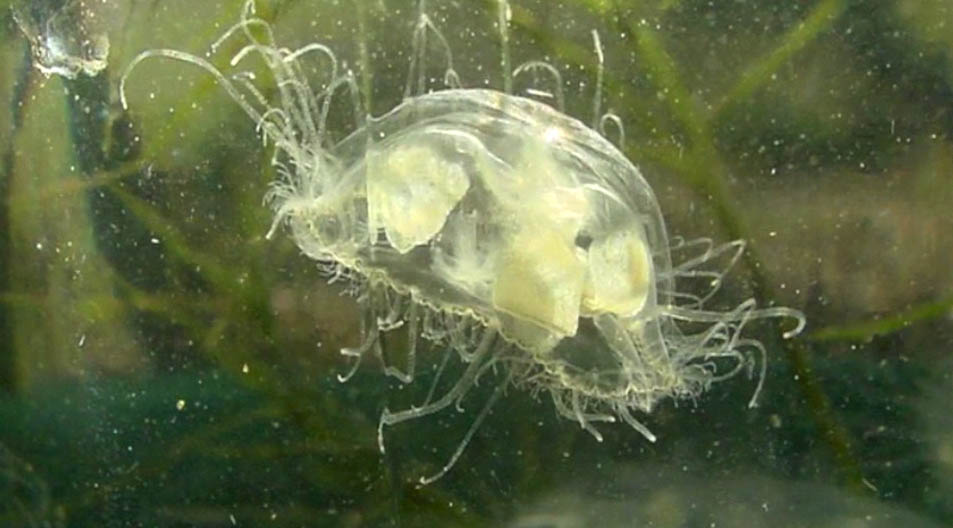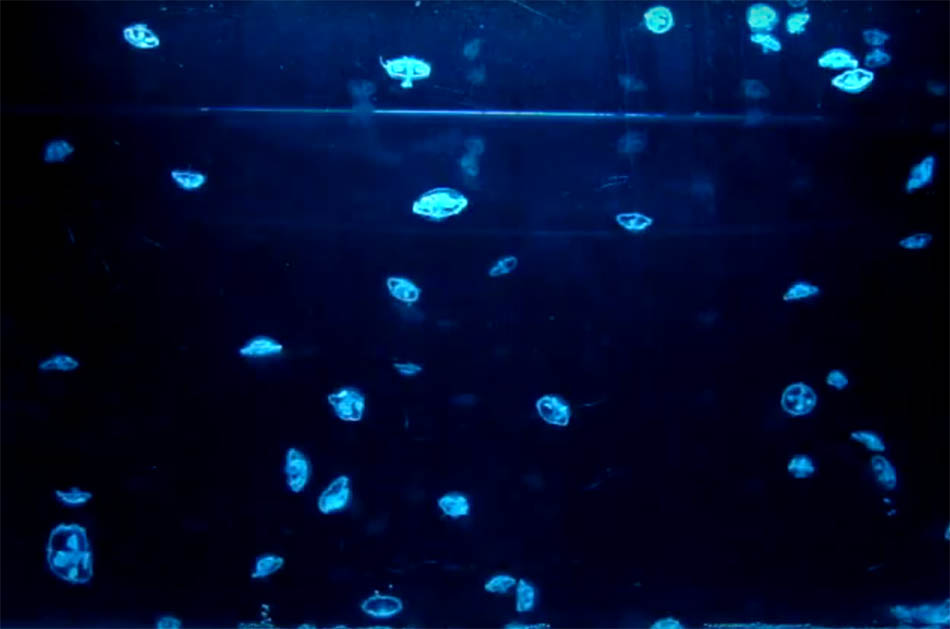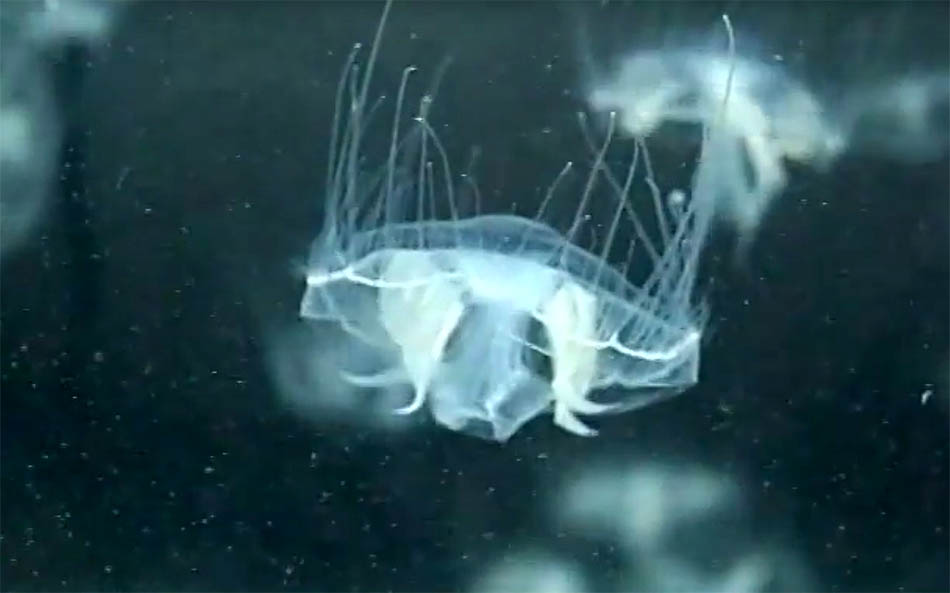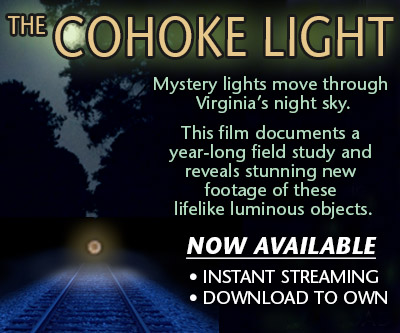Freshwater jellyfish? Many people may not even know such things exist. Yet people have reported them in almost every state in the U.S., and in countries worldwide.

For over 20 years, Dr. Terry Peard and his students at Indiana University of Pennsylvania studied these amazing creatures. Before Dr. Peard’s pioneering work, relatively little was known about their range, life cycle, capabilities, and other unusual qualities.
We interviewed Dr. Peard to learn about the amazing freshwater jellyfish, scientific name Craspedacusta sowerbii.

Some highlights of his observations:
- Freshwater jellyfish sometimes appear by the millions in ponds, lakes, and rivers, sometimes where they have never been seen before.
- They sometimes suddenly appear in large numbers, as if from nowhere.
- People from every state in the United States have reported freshwater jellyfish, and he has gathered reports from every continent around the world.
- Swarms of jellyfish are often found of only one sex. He knows of only one location where both male and female jellies regularly appear together.
- He describes the complex and flexible life cycle of the jellies.
- One form of the jellyfish, the stationary polyp, can enter a dormant stage called a podocyst. Podocysts can withstand being totally dried out and frozen for months, and then revive and begin reproducing again when exposed to water.
- It is a mystery how adult medusa jellies become sexually mature. They do this in the wild, but Dr. Peard and his students were not able to get them to mature in the laboratory during 20 years of research.

How do freshwater jellyfish arrive in new locations by the millions? Dr. Peard says some speculate that aerosol distribution may play a role.
One or more forms of the jellies may move through the sky.
In the second half of our interview, Dr. Peard reviews some of the evidence we have collected of aerial objects that seem to resemble marine invertebrates. It is amazing to see his sense of wonder and watch his enthusiasm for scientific inquiry. He realizes some of the challenges of studying the atmospheric habitat and suggests some strategies for exploration. He muses, “You really have to think outside the box.”
Learn more about freshwater jellyfish and Dr. Peard’s work at his website freshwaterjellyfish.org
Have you seen jellyfish in a freshwater pond, lake, stream, or river? Use this form to Submit a Sighting at Dr. Peard’s website, and help him learn more about these mysterious marvels: Submit a Sighting

















